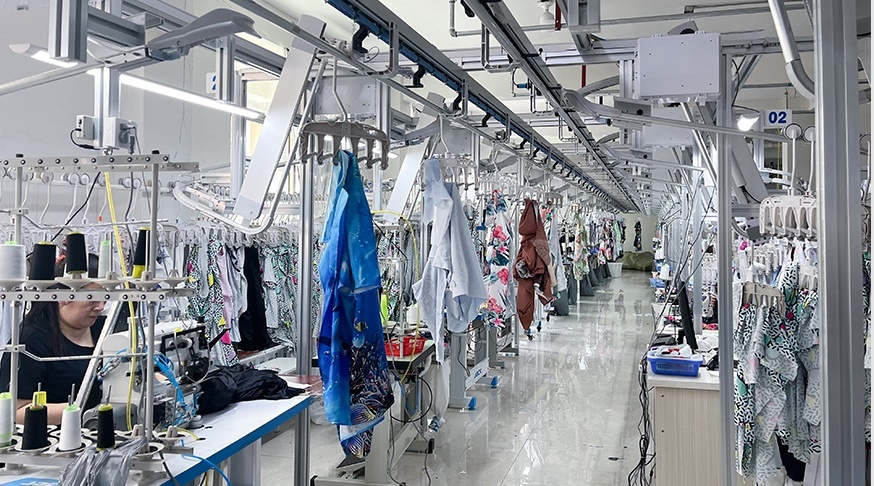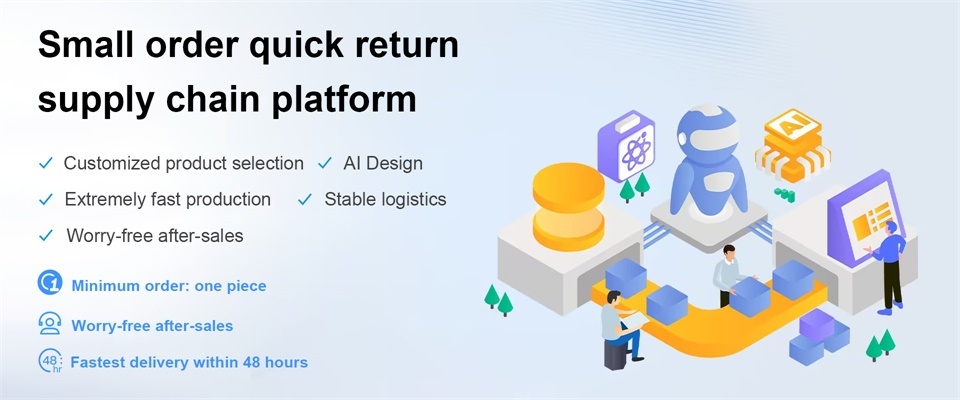As the market competition becomes more and more fierce, the demand for personalized customization of consumers at home and abroad continues to increase, and the demand of e-commerce sellers for the flexible supply chain of pod customization and small single fast reaction is becoming more prominent.
However, in order to realize the rapid response of the supply chain to market changes, it is necessary to effectively grasp all kinds of information of design, production, logistics, sales and other links, so as to form a closed loop and use data integration to promote the rapid operation of the entire supply chain system.
Lack of digital integration ability, so that the current stage of e-commerce small and medium-sized sellers can not achieve the real sense of supply chain building.

01 Consumption upgrade, small batch, high frequency into a magic weapon
With the excess of domestic productivity, national policies to promote domestic goods to the sea, boosting the development process of domestic cross-border e-commerce, but in the face of more and more e-commerce sellers influx, but also let cross-border e-commerce supply chain issues on a new height of awareness, small batch, high frequency of rapid response supply chain ability has become a new weapon for cross-border enterprises in the new stage of competition.
For sellers who study fast fashion brands, the flexible supply chain of small order fast return is no stranger, and has become the key to help the rise of the e-commerce platform SHEIN. On the surface, many categories, fast new, new styles, and low prices are the key factors for SHEIN's popularity with consumers, and the intrinsic factor is SHEIN's ultimate control of the supply chain. According to the official data, it only takes 20 days for SHEIN to send a piece of clothing from proofing to consumers. From October to December last year, SHEIN will meet 5000-6000 SKUs every day, and the inventory turnover is 30 days.

SHEIN can do it “ How quickly can new savings be made? Relying on strong “ Made in China ” . In order to find a better garment supply chain cluster, SHEIN relocated the supply chain center to Panyu, Guangzhou. As the forefront of China's garment foreign trade, Guangzhou has accumulated more than 30 years in the garment industry chain. In Panyu and its vicinity, there are a large number of garment workshops, small and medium-sized factories, supply markets of textile fabrics and accessories, storage bases and so on. In addition, Panyu has always maintained the traditional small-scale clothing production mode, and the rapid production of clothing production links is inadvertently in line with the current trend of personalized and diversified consumption. As a result, SHEIN quickly laid a supply network in Panyu, at its headquarters. Two hour cycle ” It has developed more than 1,000 clothing suppliers and more than 300 core suppliers, strengthening the control of the supply of goods.
Endgame perspective, upstream “ Degeneration” To undertake only the production function, while downstream “ Degeneration” To sell only C end, how to link upstream and downstream, balance the demand relationship between capacity and supply chain? SHEIN has built a set of supply chain management system by itself. Through its own management software, Shein shares real-time customer data with suppliers to track all links of orders in real time and visually, and thus guide the design and management of the production process.
Relying on the strong garment production link in Guangzhou and the self-built supply chain management system, SHEIN has built its own strong supply chain system to ensure the delivery ability of the supply chain.
02 accounted for 10% of the total scale, the sales of customized goods soared
By creating a flexible supply chain with concentrated elements and rapid response, e-commerce enterprises can not only guarantee the delivery capacity, but also better meet the personalized and customized needs of consumers at home and abroad.
At present, the competition of domestic and foreign e-commerce is becoming more and more fierce, and the product homogenization is becoming increasingly serious. On the other hand, driven by the trend of consumption upgrading, consumer demand is also developing in the direction of diversification, and customized goods with consumer demand as the core are highly sought after.
Personalized customization is usually the seamless combination of customized components and mass production, and the precise implantation of personalized custom elements at the end of standardized production to form a distinctive product.

Because of the understanding and close to the needs of users, customized differentiated products are highly sought after in the domestic and overseas markets. The customized model not only supports third-party platforms such as Amazon and AliExpress, but also enjoys great popularity on independent websites. Data show that the customized model accounts for about 10% of the scale of cross-border e-commerce, and the upward trend is very obvious. Even at present, there are already domestic e-commerce platforms that continue to follow up, blowing this customized wind to the major camps of domestic e-commerce.
After all, the customized model can not only effectively solve the problem of homogenization of goods from the source, but also get closer to consumers. Moreover, for sellers aiming to build a brand, “ Customization ” Or to “ Branding ” The valid path. Cross-border sellers customize their products according to the differences in market environment and target groups. When the explosion is generated, and after the formation of a good word of mouth in a specific region and consumer groups, this product is also changing from “ Customization ” Step by step “ Branding ” . On the other hand, with the introduction of a series of policies on infringement issues by major cross-border platforms, cross-border small and medium-sized sellers have created their own “ Micro brand ” The goods are more valuable.
How to build “ Micro brand ” The product? Sellers need to find trends, design themes, customize products, and then sell them to consumers through online sales channels. In addition, it is also necessary to make full efforts in logistics, payment, after-sales service and other aspects to give consumers a good shopping experience.
In order to do this, the seller needs to seek a reliable and perfect supply chain system as support.

03 With differentiated production of flexible supply chain capabilities, favored by sellers
However, small and medium-sized sellers are limited by their own strength, and can not build a perfect supply chain system. Specifically, some sellers do not have much say at the factory side due to the small total amount of orders and low frequency, which leads to no “ Small order ” In addition, some enterprises still use their own or industry experience to order quantities for stocking, lack of professional supply chain management personnel, scientific inventory decision-making ability and flexible overseas warehouse replenishment ability. Moreover, it is difficult for some sellers to perceive changes in the overseas environment and consumer demand, and they cannot combine the latest trends with product sales data to summarize the most popular elements.
On the one hand, cross-border e-commerce sellers' demand for a stable and flexible supply chain is increasing; on the other hand, small and medium-sized sellers cannot rely on their own strength to build a flexible supply chain that meets their own and market needs. How to crack the contradiction between demand and reality has become the key for small and medium-sized sellers to break the game.

At present, there are many sellers choose the pod model and the flexible supply chain service platform of small single fast return to relieve pressure for themselves. It is reported that this model relies on intelligent factories to support a custom production order, and the platform also supports merchants' independent online design through efficient selection of pictures and elements to meet the needs of merchants to respond to small batch, differentiated and fast response orders. The ability to quickly differentiate merchandise sales.
A certain e-commerce seller revealed that in the initial stage, faced with no funds, no supply, no energy and other problems, limited by the supply chain shortboard, product homogenization, high inventory costs, slow market response and other difficulties, it is urgent to find a small batch, differentiation, fast response, stable enough flexible supply chain. Later, on the recommendation of a senior in the industry, I came into contact with EZEJ Technology online clothing pod, a customized platform, and with the help of this platform, the follow-up operation has solved the supply chain problem well.
EZEJ Technology provides free online designer, easy to operate, support 1 custom production order, and provide a global service, to achieve the small and medium-sized sellers dream of 0 inventory and 0 yuan test model; Products focus on popular clothing, household goods and other categories for you to choose, to provide you with the most professional service.

At the same time, here EZEJ technology reminds you: With the gradual opening of the era of domestic and foreign e-commerce ecology and service upgrading, the development of e-commerce has entered a new stage, and the importance of new supply chains is increasing. At the new starting point, as one of the core competitiveness of the seller, whether to have a reliable supply chain determines whether the seller can start smoothly, and even in a longer range, determines how far and how well the seller can go.

